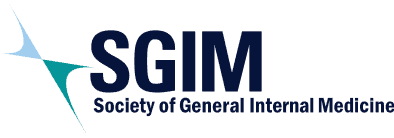Every July, we approach this time of year with excitement and caution. Why excitement and caution? The excitement is because we welcome new faculty, fellows, residents, and interns; the caution is due to the varied abilities of new faculty, residents, fellows, and interns and our lack of appreciation of their skills sets. They enter our programs, centers, and settings with energy and optimism and are thrilled by the opportunity to engage in efforts to achieve “optimal health” for everyone, as stated in SGIM’s vision.
But is there a real July Effect? The July Effect is the perception that there are more medical errors in July due to the introduction and turnover of trainees in the American healthcare system. A 2021 meta-analysis by Zogg, et al, might have put this age old question to rest.1 They found that despite the vast number of studies on the topic, the majority (~80%) show no July Effect in the inpatient clinical setting. Despite data that suggests no difference in inpatient care during the month of July, many of us academic internists know and feel something different as June quickly transitions into July.
Some of our own members have highlighted the issues in patient care that often happens in our resident clinics with this annual shift, or the every three-year turn over.2 Essien, et al, noted the interplay of the educational learning environment and its ability or inability to achieve optimal health outcomes.3 Our members continue with their scholarly efforts on debating the orthogonal questions that might lead to interventions to ensure a “just system of care in which all people can achieve optimal health.” I am left with asking is the July Effect an inpatient or outpatient phenomenon? I sincerely hope that our members will continue to investigate the July Effect as it relates to academic general internal medicine.
In addition to the changes within the learning environment, the July Effect may have another meaning to our Society as it marks the beginning of a new fiscal year. In the business world, the cycle follows the path of 1) the Startup, 2) Growth, 3) Maturity phases, and the final phase of 4) Renewal/Decline.4 This four-stage cycle aligns well with SGIM’s efforts: for the past two months, the SGIM Council established a budget and program for the upcoming year with the guidance from the finance committee. The Commissions and Committees submitted their annual plans and work is well underway to align these plans with our Councils’ strategic direction to move us into the growth phase.
In the fall, we will be using best practices to implement these plans. During this time, SGIM will also begin to follow through on our Diversity, Equity, and Inclusion (DEI) Statement issued in May5 to ensure a diverse, inclusive society for all. The winter will provide the opportunity for us to enter into the Maturity phase. The Board of Regional Leaders (BRL) and Association of Chiefs in General Internal Medicine (ACLGIM) will be in the midst of their programming year and will be testing the waters for what it will be like for us to gather together face-to-face. It is within the Maturity phase that the SGIM Annual Meeting program committee will be preparing the Society’s inflection point towards the meeting in Spring 2022 when the Renewal phase returns and new possibilities come. During that phase, all SGIM members are poised to deeply engage; after the annual meeting we always make a generative decision. Was it worth it? Yes! What can we do better? A lot! It is at that moment that we work to prevent the Decline phase, and begin the cycle all over again. In June and July, we then ask the same questions and there are often critical choices to be made. For example, what new research questions should be considered? How do you improve your clinical operations year after year? How can we ensure a robust learning environment for the next generation? What should I submit for the Round 1 call for SGIM Annual Meeting workshop and clinical update submissions? As July begins, we can again approach it with caution and excitement.
References
- Zogg CK, Metcalfe D, Sokas CM, et al. Reassessing the July Effect. Ann Surg. 2021 Feb 25. doi: 10.1097/SLA.0000000000004805. Online ahead of print.
- Pincavage AT, Lee WW, Beiting KJ, et al. What do patients think about year-end resident continuity clinic handoffs? A qualitative study. J Gen Intern Med. 2013;28(8):999-1007.
- Essien UR, He W, Ray A, et al. Disparities in quality of primary care by resident and staff physicians: Is there a conflict between training and equity? J Gen Intern Med. 2019;34(7):1184-1191.
- Dempsey B. Business life cycle spectrum: Where are you? Forbes. https://www.forbes.com/sites/theyec/2018/01/11/business-life-cycle-spectrum-where-are-you/. Published January 11, 2018. Accessed June 15, 2021.
- Society of General Internal Medicine. A statement from SGIM leadership on diversity, equity and inclusion. https://www.sgim.org/about-us/vision—values/dei. Accessed June 15, 2021.
Issue
Topic
Clinical Practice, Health Policy & Advocacy, Leadership, Administration, & Career Planning, Medical Education, Research, SGIM
Author Descriptions
Every July, we approach this time of year with excitement and caution. The excitement comes from welcoming new faculty, fellows, residents and interns; the caution from the varied abilities of new faculty, residents, fellows, and interns and our lack of appreciation of their skills sets. They enter our programs, centers, and settings with energy and optimism and are thrilled by the opportunity to engage in efforts to achieve “optimal health” for everyone, as stated in SGIM’s vision. But is there a real July effect?
Share
Reflejos in the Medical Field
I’m looking at the photograph of a five-year-old girl, her big brown…


